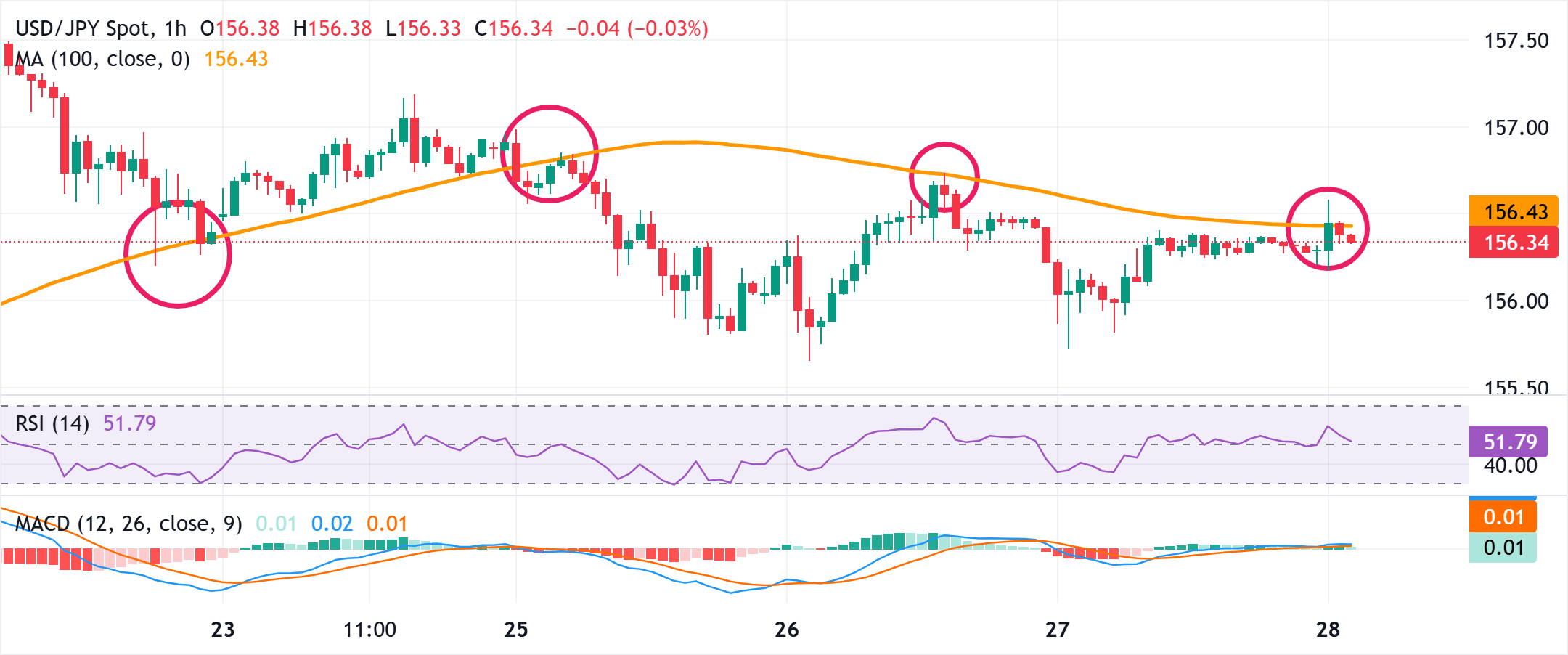Japanese Yen bulls remain on the sidelines despite firmer Tokyo CPI
- The Japanese Yen struggles to lure buyers as BoJ uncertainty offsets Tokyo CPI print.
- Fiscal concerns and the upbeat market mood further undermine the safe-haven JPY.
- Dovish Fed expectations act as a headwind for the USD and cap gains for USD/JPY.
The Japanese Yen (JPY) ticks lower during the Asian session on Friday, despite mostly upbeat domestic data, and retreats further from the vicinity of a one-week top against its American counterpart. Investors remain worried about Japan's deteriorating fiscal condition on the back of the government's massive economic package, which had been a key factor behind the recent spike in the Japanese government bond (JGB) yields. Apart from this, the prevalent risk-on mood, bolstered by the prospects for lower US interest rates and hopes for a Russia-Ukraine peace deal, is seen undermining the safe-haven JPY.
Meanwhile, cautious signals from Bank of Japan (BoJ) policymakers indicate that rate normalization will be gradual, forcing investors to reassess expectations for the next policy move. This turns out to be another factor keeping the JPY bulls on the defensive. Any meaningful JPY depreciation, however, seems elusive amid speculations that authorities would step in to stem further JPY weakness. Moreover, dovish US Federal Reserve (Fed) expectations fail to assist the US Dollar (USD) to build on the overnight bounce from an over one-week low and might contribute to capping the upside for the USD/JPY pair.
Japanese Yen struggles to lure buyers as fiscal concerns offset slightly above forecast Tokyo CPI
- Government data released earlier this Friday showed that the headline Consumer Price Index (CPI) in Tokyo – Japan's capital city – rose 2.7% YoY in November, while a gauge, which excludes volatile fresh food prices, came in at 2.8% YoY. Moreover, the core CPI, excluding both fresh food and energy prices, held steady at 2.8% during the reported month.
- The data pointed to sticky inflation in Japan and backs the case for further policy tightening by the Bank of Japan (BoJ). The Japanese Yen, however, struggles to gain any meaningful traction as bulls remain on the sidelines amid growing concerns over Japan's worsening fiscal situation on the back of Prime Minister Sanae Takaichi’s pro-stimulus stance.
- In fact, reports on Thursday suggested that Japan's government plans to issue more new bonds to fund Takaichi’s economic package. Worries about the supply of new government debt had pushed longer-dated government bond yields to their highest in more than two decades earlier this month and contributed to the Japanese Yen's relative underperformance.
- Meanwhile, BoJ board member Asahi Noguchi signaled that the monetary tightening must follow an incremental path. This seems to have tempered market expectations for an imminent BoJ rate cut in December, which, along with a generally positive tone around the equity markets, is seen undermining the safe-haven JPY during the Asian session on Friday.
- In contrast, the recent comments from several Federal Reserve officials suggested that another interest rate cut in December is a live option. Adding to this, speculations about a dovish successor to Fed Chair Jerome Powell might cap the US Dollar (USD) recovery from a one-and-a-half-week low, touched on Thursday, and act as a headwind for the USD/JPY pair.
- On the geopolitical front, Russian President Vladimir Putin said that a revised US proposal could form the basis of a future Ukraine agreement. This follows US President Donald Trump's remarks, saying that a Ukraine–Russia agreement is very close. The optimism, in turn, further undermines the JPY's safe-haven status and lends support to the USD/JPY pair.
USD/JPY could accelerate the positive move above the 100-hour SMA pivotal hurdle

Spot prices need to find acceptance above the 100-hour Simple Moving Average (SMA), currently around the 156.45-156.50 area, to back the case for additional gains. The subsequent move up could allow the USD/JPY pair to reclaim the 157.00 mark and climb further toward the 157.45-157.50 intermediate hurdle en route to the 158.00 neighborhood, or the highest level since mid-January, touched last week.
On the flip side, the 156.00 round figure could protect the immediate downside ahead of the weekly swing low, around the 155.70-155.65 region. Some follow-through selling could make the USD/JPY pair vulnerable to test the 155.00 psychological mark. A convincing break below the latter will be seen as a fresh trigger for bearish traders and set the stage for an extension of a one-week-old downtrend.
Economic Indicator
Tokyo CPI ex Food, Energy (YoY)
The Tokyo Consumer Price Index (CPI), released by the Statistics Bureau of Japan on a monthly basis, measures the price fluctuation of goods and services purchased by households in the Tokyo region. The index is widely considered as a leading indicator of Japan’s overall CPI as it is published weeks before the nationwide reading. The gauge excluding food and energy is widely used to measure underlying inflation trends as these two components are more volatile. The YoY reading compares prices in the reference month to the same month a year earlier. Generally, a high reading is seen as bullish for the Japanese Yen (JPY), while a low reading is seen as bearish.
Read more.Last release: Thu Nov 27, 2025 23:30
Frequency: Monthly
Actual: 2.8%
Consensus: -
Previous: 2.8%
Source: Statistics Bureau of Japan
